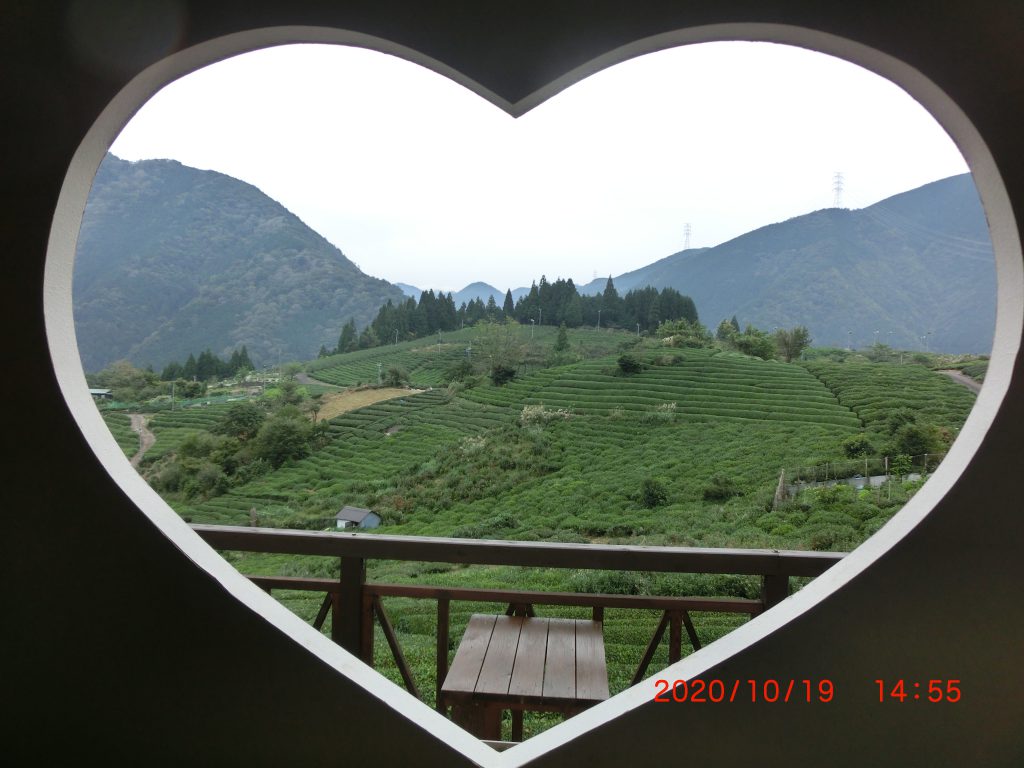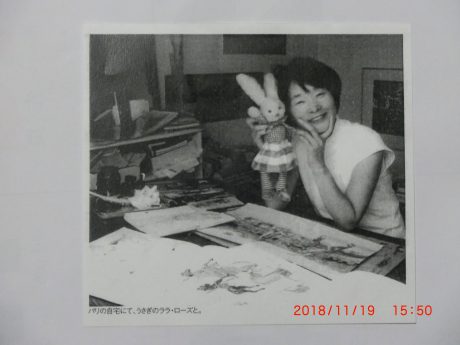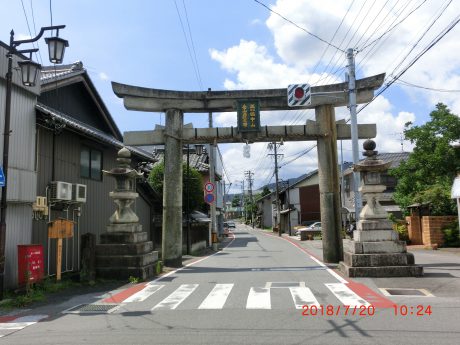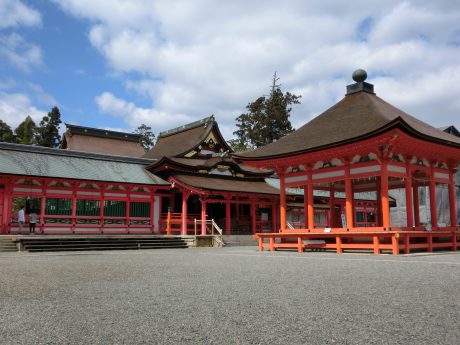

中山道加納宿
コンテンツ
KURITA’S PHOTO STORY⑦
(英語訳栗田)
中山道加納宿
Nakasendō Kanōjuku
JR岐阜駅南に広がる加納地区は中山道の宿場町として、また加納藩の城下町として江戸時代から栄え、和傘の名産地としても知られる歴史のある町です。
町を流れる清水川は桜の名所、ホタルの生息地であり、川沿いには歴史と自然をたどる遊歩道が整備されています。
To the south of JR’s Gifu Station spreads Kanō district, which prospered as both a post town and a catsle town during Edo period.
It has also been known for its production of traditional Japanese umbrellas.
加納城
Kanō Catsle
関ヶ原の戦いの後、徳川家康は岐阜城を廃城とし、西国諸国を牽制する交通の要衝として加納城を築きました。
After Sekigahara, Ieyasu demolished Gifu Castle because mountain-top castles weren’t needed anymore. Instead he newly built Kanō Castle in order to check daimyōs in western part of Japan.

出典:加納まちづくり会発行、冊子「加納のまち」より
加納城初代城主は徳川家康の長女亀姫を正室とした奥平信昌。
信昌は剣術に優れ姉川の戦いや長篠の戦いでの戦功が認められ家康の娘婿となったと言われています。
The first lord of Kanō Catsle was Okudaira Nobumasa, whose lawful wife was Ieyasu’s first daughter called Kamehime.
He had been a good swordsman and had distingnished himself in the battles of Anegawa and Nagashino.
This was said to be the reason for his becoming Ieyasu’s son-in-law.


本丸の南東の土塁

本丸内部の土塁

加納公園(本丸跡)の北門
岐阜気象台

この気象台は、加納城二の丸跡にあり、かつては、ここに岐阜城天守閣が移築されていた。その名残として、加納城の珍しい石垣が見られる。
This observatory stands at the ruins of the intermediate outworks of Kanō Catsle, where the donjon of Gifu Catsle had been moved and reconstructed.
As a result, you can still see the remaining, genuine stone wall.
ライオンに跨る少年像


In commemoration of the great achievement of Okudaira Nobumasa, this statue was donated by Mr.Okudaira Masanobu, a descendant living in Ōita prefecture. A noted sculptor, Ogasawara Yasubei made it.
加納小学校の赤門

加納城三の丸跡に建つこの小学校は日本で最も古い小学校の1つに数えられ、平成24年に創設140年を迎えた。正門の赤門は「岐阜の宝」100選の1つに数えられています。
At the ruins of the outermost outworks of Kanō Castle is located Kanō Elementary School, which was founded about 150 years ago and is one of the oldest elementary schools in Japan.
This main gate called Akamon is among “100Treasures of Gifu”
加納城大手門跡

Site of the front gate of Kanō Castle
中山道六十九次加納宿(歌川広重)
Kanō juku in Ukiyoe by Hiroshige

茶所より南に行ったあたりから加納城を描いたものと思われる。
Hiroshige, it seems, drew this picture from near Chajo.

加納城の南東300mに「川手城跡」の石碑が立っている。室町時代に美濃、尾張、伊勢三国の守護であった土岐氏の居城跡。都より貴族や文化人が訪れてきて、文化の香りが高く、鎌倉や山口と並ぶ賑わいをみせていたという。
300m to the southeast of Kanō Castle stands a stone monument engraved “The Ancient Site of Kawate Castle”. It was the residence of Toki family, a powerful shugo (constable) governing Mino, Owari and Ise, in Muromachi Period. The area was highly prosperous in those days.
玉性院
Gyokushōin Temple

2月3日の節分つり込みまつりでは赤鬼に扮した厄男を神輿に、おかめに扮した厄女を御所車に乗せ町内を練り歩き、最後に赤鬼が担ぎ手の中に飛び込みもみくちゃにされながら本堂につり込まれ、その年の無病息災を祈ります。
This temple is famous for Setsubun Tsurikomi Matsuri.
Every year on the evening of February 3(Setsubun), a man of 42 (man’s critical age) disguised as a red ogre, on a portable shrine, and a woman of 33 (woman’s critical age) disguised as a fat-faced woman in a kimono, in a court carriage, are carried through the neighborhood and finally the red ogre jumps into the carriers of the portable shrine and then lifted into the inner temple building.
They do this to pray for good fortune in the coming new year.
Feb.3 had been New Year’s Eve until 1872.

節分が近くなると街角に2体の赤鬼
With Setsubun coming near, two giant red ogres appear on street-corners.
加納天満宮
Kanō Tenmangū Shrine

菅原道真を祭神とし、加納の守り神として歴代加納城主の庇護を受けてきました。
Dedicated to Sugawara Michizane, the shrine had been protected by successive lords of Kanō Catsle as Kanō’s guardian god.
加納宿本陣跡と和宮句碑
Monuments of Kanōjuku honjin and Kazunomiya

1861年皇女和宮が徳川将軍家に嫁がれるため京から江戸へ向かわれた時ここ本陣松波家に宿泊されました。
In 1861 Kazunomiya stayed at this honjin (official inn for a daimyō) on her way from Kyoto to Edo.
西方寺
Saihō Temple

川端康成の「篝火」(かがりび) のモデルとなった伊藤初代さんが当時、この寺にいました。
The heroine of “Bonfire”, which is among Nobel laureate Kawabata Yasunari’s early works, was modeled after (Miss) Itō Hatsuyo, who lived at this temple in those days.
中山道のシンボルの時計台

清水緑地
Shimizu Ryokuchi (Park)

JR岐阜駅駅前にあり、緑地のなかを清水川が流れ、町中にあって初夏には蛍が舞う緑あふれる市民憩いの公園です。
Full of green, this is the place for relaxation for the citizens.
This park is located in front of Gifu Station with Shimizu River running through it. In early summer fireflies are seen.

清水緑地から見たJR岐阜駅
Shimizu Ryokuchi and Gifu Station

岐阜の桜 標本木
Gifu cherry blossom, Standard Tree.


清水川沿いにある、岐阜気象台の「岐阜の桜の開花」の標本木です。
“Whether cherry blossomes are out in Gifu” is decided by men-at-Gifu-metrological-observatory’s looking at and counting, flowers of this tree, which is located on the beautiful bank with a walking-road along Shimizu River.

岐阜駅南側から北側のシティータワー43が見えます。
City Tower 43 on the north side of the station is seen from the south side.

シティータワー43F展望台からの眺め
View from the top of City Tower 43
光国寺
Kōkokuji Temple

亀姫が慶長19(1614)年に創建しました。死亡後に埋葬された五輪塔墓があります。
This temple was founded by Kamehime in 1614. In its precincts lies Kamehime’s gravestone.

御鮨街道
Osushi Kaidō

新荒田川と名鉄と加納大橋と御鮨街道レリーフ

側溝のふた
長良川の鵜飼いでとれた鮎で作った鮎鮨を江戸幕府へ献上するために運んだ道が御鮨街道です。
Iyeyasu loved ayuzushi (fermented ayu cormorant fished from Nagara River with rice). So during Edo period ayuzushi were carried to Edo bakufu in five days, about twenty times a year.
The road on which they were carried was called Osushi Kaido, which overlapped with Nakasendō for 800 meters in Kanōjuku.
ぶたれ坊と茶所

乱暴者だった江戸時代の力士鏡岩が、自分の所業を反省し、罪を償うため、自分の木像を作って、「ぶたれ坊」と名づけ、通行人に棒で打たせて罪ほろぼしを乞いました。茶をふるまったことから「茶所」とよばれます。
Edo sumo wrestler, Kagamiiwa was a wild fellow. Reflecting on his conduct, he made a wooden image of himself, and let passers-by beat it in order to expiate his sin. He served tea to people, so the place was called Chajo.
和傘
Wagasa, Traditional Japanese umbrella.

撮影協力 藤沢商店
加納の和傘づくりは江戸時代、藩の財政不足を補うために、下級武士のサイドビジネスとして始まりました。昭和25(1950)年の最盛期には、1200万本もの和傘が生産されましたが、その後は洋傘に置き換えられて需要が激減しました。
現在は数軒の製造業者と数十人の職人が伝統を守り続けています。歌舞伎・日本舞踊などの伝統芸能に使用されたり、伊勢神宮、宮中などの儀式用の製作依頼もあります。
They started to make wagasa in time of financial drought of Kano-clan during Edo period. As many as twelve million of them were produced per year in 1950, the height of prosperity. Since then demand has been decreasing sharply, because of western-style umbrellas.
At present the tradition is being maintained by some makers and tens of craftsmen.
Wagasas are now used in traditional art like Kabuki or Nihonbuyō. Also orders come from Ise Shine or Imperial Court.

和傘天日干し
wagasas dried in the sun
昭和30年頃までは加納のあちらこちらで見られた風景。この日運よく見る事が出来ました。
Wagasa drying had been often seen here and there until the 30’s of Shōwa.
日本泉酒造
Nihonizumi Sake-brewery

江戸末期創業、明治に現在地に移転しました。地下には酒蔵があり見学や試飲もできます。
Brewing started at the end of Edo period. Sake is brewed underground where temperature is kept uniform throrghout the year.
だんごや
Dango-ya

江戸末期から約150年続く和菓子屋さん。
This Japanese-style confectionary has been lasting for about 150 years.
花工房 ぎふ

アクティブGのオープン当初からある人気花店。アレンジメントのセンスの良さとフラワー教室が人気です。
Hana Kōbō Gifu, a flower shop popular for their refined arrangement and flower classes, has been operating since the outset of Active G.
中山道垂井宿編へ















